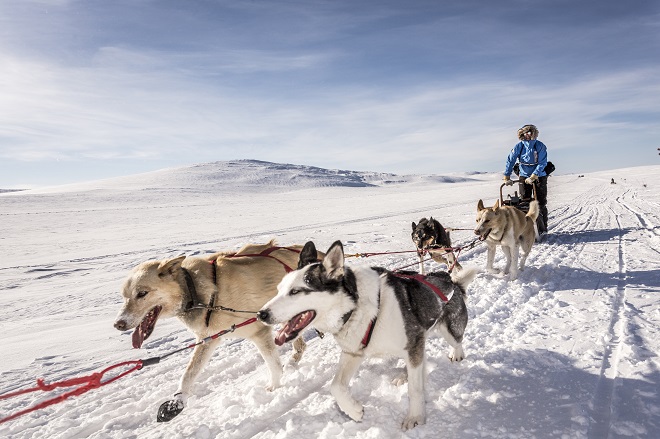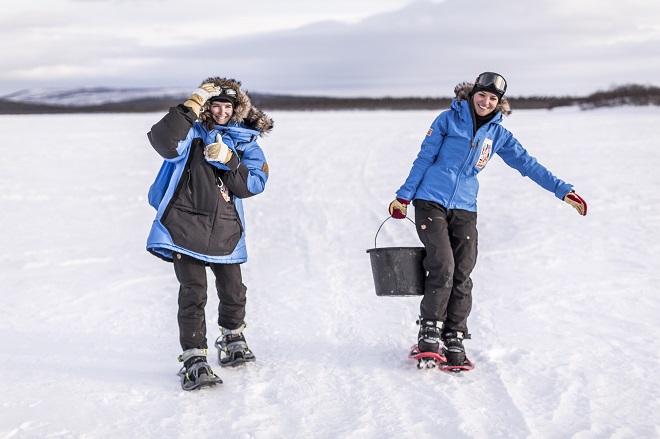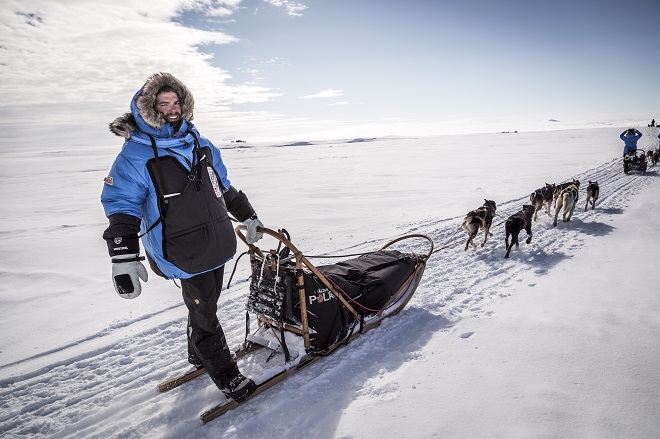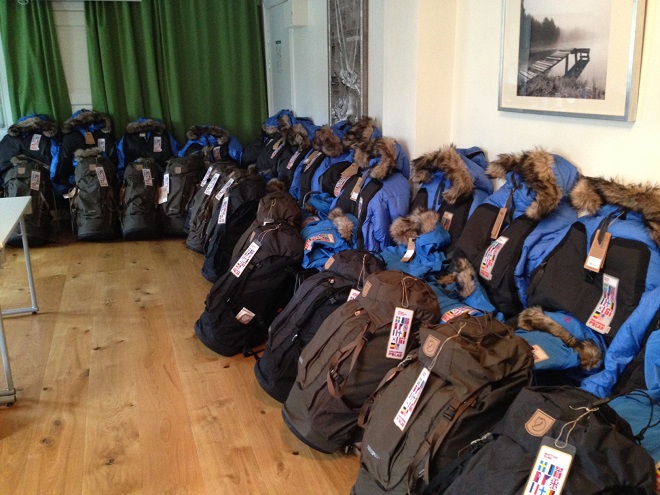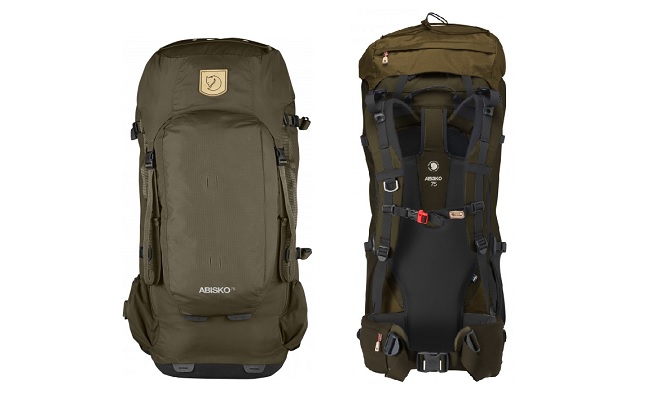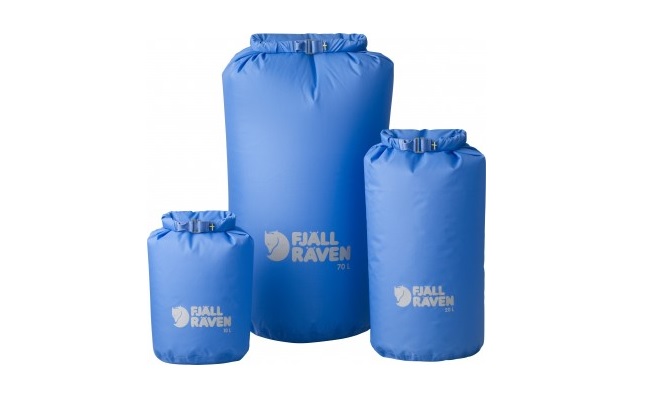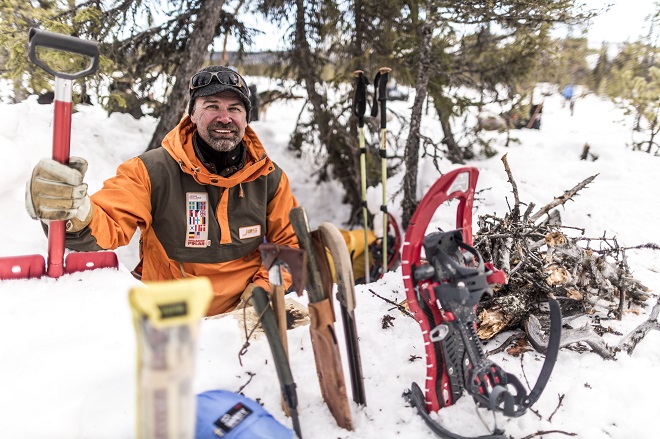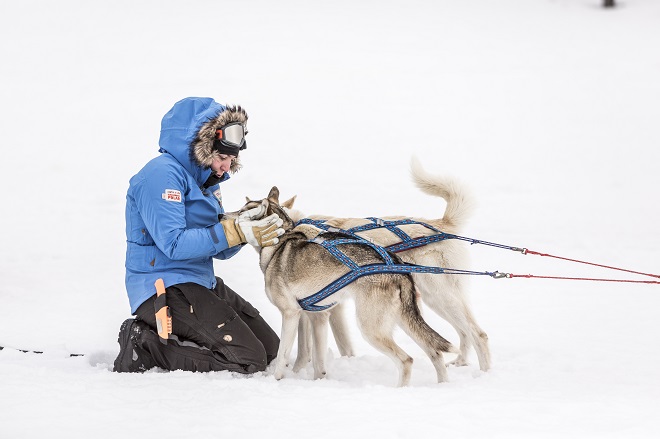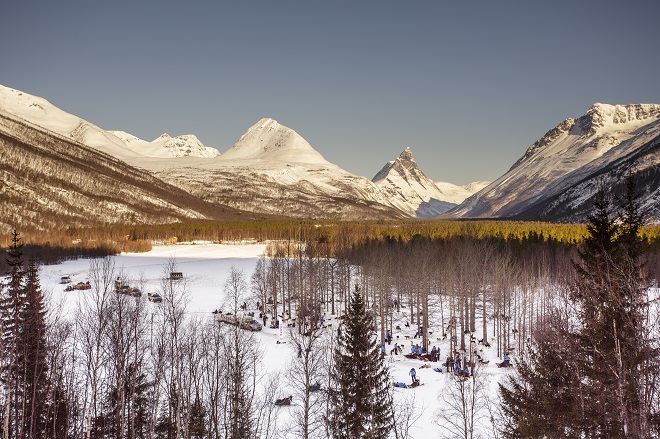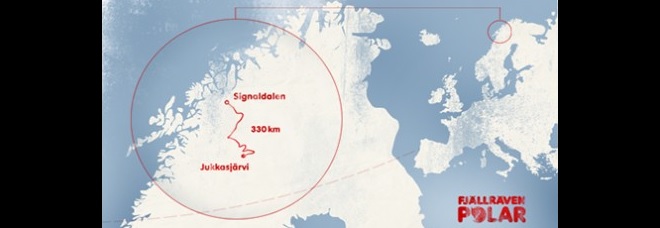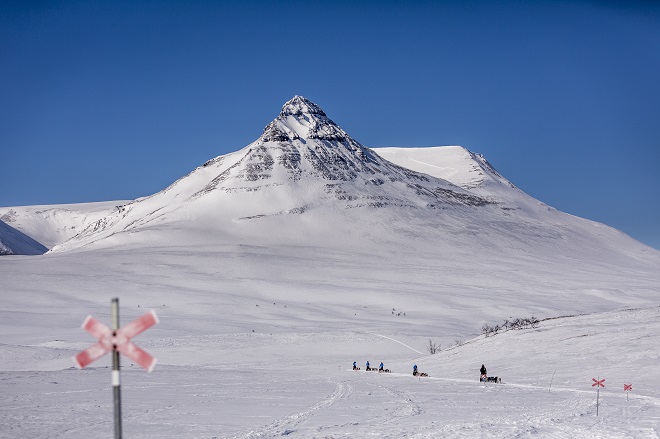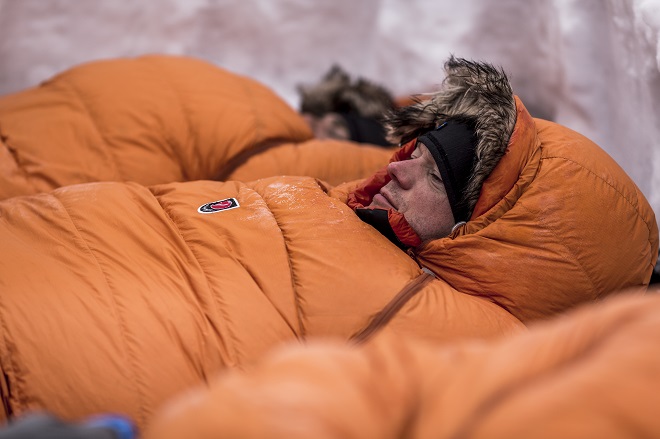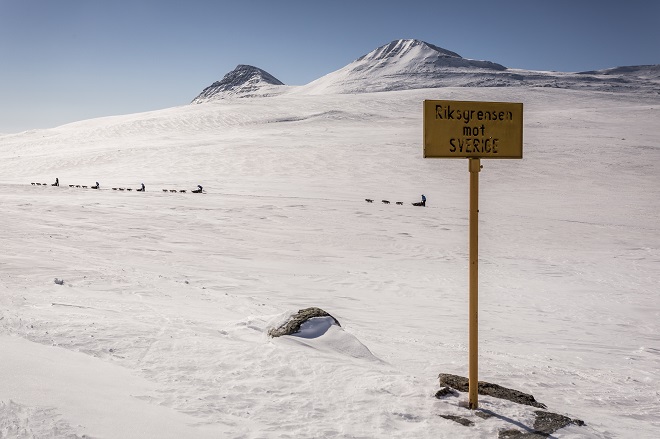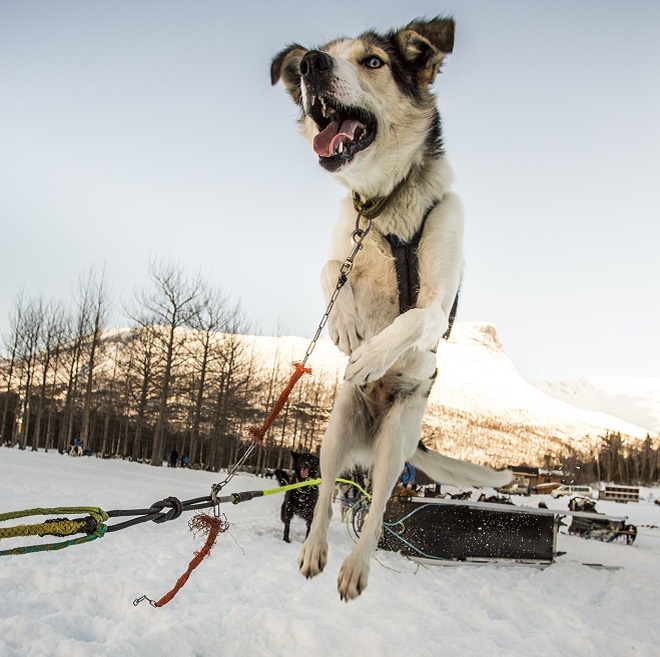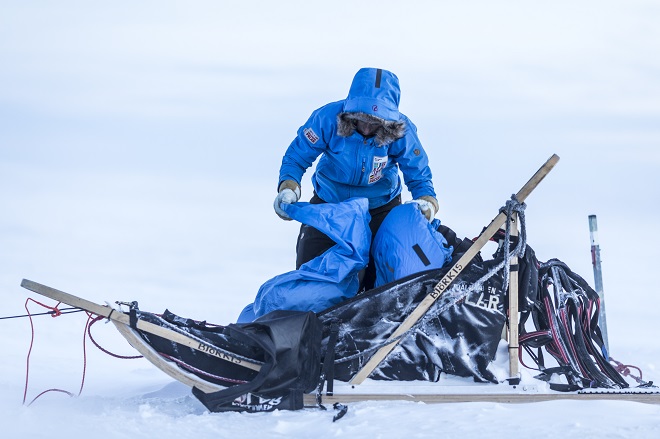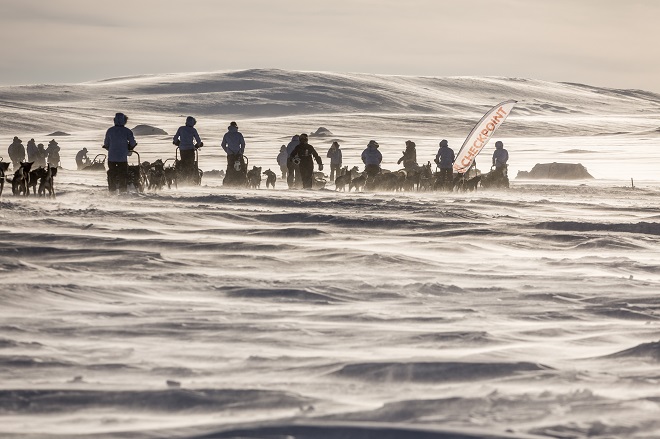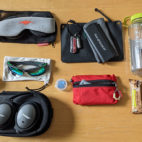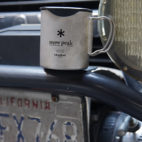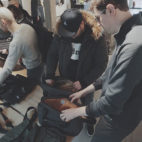Into the wilderness :: Fjällräven Polar 2014
* All photos by Håkan Wike. Copyright Håkan Wike and Fjällräven International
Once a year a group of strangers meet up in the comfort of a cosy Swedish hotel…two days before leaving the outside world behind and embarking on an epic 300-kilometre trek that begins above the Arctic Circle from Signaldalen in Norway and ends in the forests close to Jukkasjärvi in Swedish Lapland. Each person will carry everything they need to survive for four days – food, shelter and equipment – on a sled, pulled by a team of eager and powerful dogs, that races across a remote and breathtaking tundra. There are no supply shops en route, no electricity, no civilization. Forget the comforts of home or handy hotel conveniences. This is getting back to nature in its raw and untamed form and these individuals need to rely on their skills, their fellow travellers, their equipment and their dogs to get them where they need to go.
So who are these individuals? Hardened explorers with years of experience? Professional athletes or outdoor guides? Think the opposite of this and you’re closer to the mark. Students, IT consultants, kindergarten teachers, gardeners, marketing designers…these are the kinds of people who participate each year in Fjällräven Polar.
The story behind Fjällräven Polar
Fjällräven Polar was initially a dog sled race competition that began in 1997 and took place each year until 2006. In 2012 Fjällräven Polar was resurrected in a new form, no longer a race but still following the same dog sled course. The difference is that instead of being a competition, the event now encourages regular people with no particular outdoor experience to participate in order to learn about the environment and associated outdoor activities.
The aim of the event is to highlight how great the outdoors can be during winter and to demonstrate that anyone can enjoy an outdoor adventure if they are well equipped and suitably prepared. Additionally, it assists the brand by serving as a testing opportunity for Fjällräven’s clothing and equipment.
Selecting the participants
Two participants are chosen from each of the countries represented in the event. The countries (or groups of countries) are Sweden, Norway, Finland, Denmark, Benelux, Germany, the UK, the USA, Czech Republic and “other countries”. In order to join the event hopefuls upload photo/video applications to Fjällräven’s website. The applications are a chance to capture votes and as a result they can get pretty creative, from roping in friends to create a giant snowflake and husky to getting trapped inside a Fjällräven booklet with the only hope of escape being able to join the Polar trek. The first participant for each country is the individual who gets the most public votes for their application, while Fjällräven selects the second participant. Over 900 potential participants applied for Fjällräven Polar 2014 and 20 were chosen to compete in this exciting event. Apart from individuals needing to be over 18 years old and healthy, there are no specific restrictions for who can participate or how fit they have to be.
Training
Before Fjällräven Polar 2014 began, the participants had to learn the ropes. The entire event took place over six days, from 7 April to 13 April 2014, with two of those days reserved for training.
Training – Day 1
Day 1 of the training was a combination of theoretical training and getting kitted out with suitable clothing and equipment. The training took place at the 32 Rum & Kök hotel in Sigtuna, Sweden. For the majority of the participants, this was the first time they had met in person (though they had been communicating previously via the Internet). However, some of the participants had managed to meet up prior by way of serendipity – Melanie from Germany and Tuija from Finland had a chance meeting in Thailand a month before whilst on holiday and Tuomo from Finland met Katrina from Estonia when passing by during meeting up with family.
Everyone was buzzing with excitement and eager for their adventure to begin. Training marked the definitive switch from dreams to reality – no more hopes, wishes and fantasies; the Polar experience was real and had officially begun. First was an overview of what to expect during the Polar trek, followed by learning about the importance of layering clothing correctly. Then it was time for the giant-sized goodie bags in the form of the Fjällräven Abisko 75-litre rucksacks full of all the gear they would need during Polar.
The Gear
Fjällräven provided the participants with everything they would need for the journey. This included items such as clothing, cooking equipment, tents and sleeping bags. Participants were able to keep some of the equipment, a list of which is below:
- Fjällräven Polar Parka – http://www.fjallraven.com/fjallraven-polar-parka
- Fjällräven Eco-Tour Jacket – http://www.fjallraven.com/eco-tour-jacket
- Fjällräven Eco-Tour Trousers – http://www.fjallraven.com/eco-tour-trousers
- Fjällräven Abisko 75L backpack
- Fjällräven Web belt – http://www.fjallraven.com/abisko-web-belt
- Aclima 4 pairs of woollen socks – http://www.aclima.no/products/sox
- Aclima Base layers (1 net shirt, 1 net pants, 1 ninja-suit, 1 long sleeve shirt, boxershort) – http://www.aclima.no/products/woolnet, http://www.aclima.no/products/warmwool/men/overall
- Fjällräven Keb fleece – http://www.fjallraven.com/keb-fleece-jacket
- Hanwag boots
- Hestra gloves x 2 pairs – http://hestragloves.com/en/
- Fjällräven Nordic heater – http://www.fjallraven.com/nordic-heater
- Fjällräven Neck Gaiter
- Fjällräven Balaclava
- Goggles
- Sunglasses
- Brunton Pulse 1500 charger – http://www.brunton.com/collections/portable-power/products/pulse-1500
- Brunton head torch – http://www.brunton.com/pages/lights
- Brunton compass – http://www.brunton.com/pages/navigation
- Primus vacuum bottle – http://www.primus.eu/c-h-vacuum-bottle-1-0-l
- Primus drinking bottle – http://www.primus.eu/drinking-bottle-aluminium-1-0-l
Other equipment that the participants used during Polar but which had to be returned afterwards included:
- Fjällräven -30 Polar sleeping bag – http://www.fjallraven.com/fjallraven-polar-30-reg
- Fjällräven Akka Endurance 3 tent – http://www.fjallraven.com/akka-endurance-3
- Fjällräven Windsack – http://www.fjallraven.com/vindsack
- Primus Omnilite TI – http://www.primus.eu/omnilite-ti
- Primus pots – http://www.primus.eu/eta-pot-3-0-l
After their gear was sorted, participants flew to Tromsø in Norway and then on to the Tamok valley near Signaldalen for Day 2 of the training.
Training – Day 2
Making things just a little bit more real, Day 2 involved meeting the experts who were going to be travelling with the participants during Fjällräven Polar. Each year experts accompany the participants throughout the journey to provide guidance and assistance along the way – and when we say experts, we do mean experts. Kenth Fjellborg, the Chief Guide, is one of the most qualified dog sled drivers in Sweden, while the Chief Outdoor Instructor is Johan Skullman who served as an officer in the Swedish Armed Forces and as head developer of clothing and equipment for the soldiers.
On Day 2 the participants also met the dogs for the first time and received a range of practical training regarding pitching their tents correctly, using their cooking stoves, as well as how to handle the dogs and sleds.
The dogs
Fjällräven Polar couldn’t be what it is without the dog teams. Alaskan huskies are used to pull the sleds and most of the dogs that participate are from Kenth Fjellborg’s kennels. These dogs are serious athletes but in addition to their physical prowess they also need to have good temperaments in order to be included in the event. Check out the video below to find out more about Kenth Fjellborg and these amazing animals.
The route
Adventure likes to get an early start and waits for no one – hence the 5am call to rise and shine on Day 3. This marked the first day of the four-day dog sled journey and the participants were transported to Signaldalen to begin. The four walls of the classroom and the security of the training environment were now behind them. It was time to put the skills and knowledge they had learned to the test in the challenging and awe-inspiring landscape that lay ahead.
When the participants arrived at the starting point the dogs were all harnessed up on their chains connected to trees within a sparse wooded area and it was all action. There was no time for participants to chat amongst themselves as they were each assigned six dogs which had to be harnessed to the sleds – a task that wasn’t easy as the dogs were strong and excited to get started. There was no pre-trek talk but then one wasn’t required – as soon as the dogs were harnessed everyone was ready to go. Time for the journey of a lifetime to begin!
The Fjällräven Polar route incorporates parts of traditional migration trails utilised by the Sami to herd reindeer. The landscape varies en route and includes vast open expanses of snow and frozen lakes, a permafrost region, snow-capped mountains and stretches of beautiful birch forests. Participants were thrown into the deep end from the start by having to head up a very steep hill. From sea level the participants climb to an altitude of around 800 metres and travel across mountains running from north to south along the Swedish and Norwegian border. The sleds scrape across snow and ice as they hurtle onwards to Tavvavuoma, one of the biggest permafrost areas in Europe. This part of the route is extremely exposed to the elements. With good weather visibility can be as far as 50 kilometres but with poor weather the snow and wind are particularly fierce.
As the journey continues towards Torneträsk, the terrain gradually gives way to birch forests. At around 70 kilometres long and around 15 to 20 kilometres wide, Torneträsk is one of the biggest lakes in Sweden. The Polar trail traverses frozen water and winds through increasingly dense forest as participants near the finish line, a beautiful and remote resort at Lake Väkkäräjärvi.
In addition to navigating the terrain effectively, participants have to cope with varying temperatures. During Fjällräven Polar temperatures tend to be around -5 degrees Celsius to -10 degrees Celsius during the day, while at night it can drop to as low as -25 degrees Celsius. However, with the proper equipment and training that participants receive, extreme temperature changes and exposure to the elements becomes far less daunting as the participants learn how to operate efficiently in such environments (the last night even involved sleeping under the stars instead of within tents).
The basic skills and knowledge which are learned during the training are built upon during the journey, with participants becoming more adept at righting the sleds when they tip over and learning how to start fires using only fire steel and birch bark. However, one piece of knowledge that is foremost in participants’ minds on the last day of the trek is the fact that the journey will soon come to an end. As a result, the atmosphere is tinged with sadness. An adventure that feels like it has just begun will all too quickly be over. However, applause and congratulations along with the promise of a warming meal and enticing sauna boost the spirits of the participants as they cross the finish line. National flags are waved proudly as a large group consisting of Fjällräven staff, members of the press and other invited guests from various companies welcome the adventurers to their final destination.
After completing the journey all 20 Polar participants settled into a large cabin by the lake which would be their sleeping quarters for the night. The bliss of the sauna cabin beckoned, with some very much needed beer and relaxation. Plenty of beer, wine and snacks were provided by the staff and the cabin also had its own private kitchen, living area and dining area to enjoy a well-deserved rest. During the evening the participants received a treat in the form of their own personal chef who prepared a congratulatory meal. After dining in style, it was time to party in style. The participants made their way to a larger communal cabin for drinks, dancing and partying the night away in celebration of the amazing achievements, solid friendships and incredible memories that were forged during Fjällräven Polar and which will stay with them for the rest of their lives.
Some fun figures
Here’s a selection of numbers to wrap your head around in order to get a better sense of Fjällräven Polar:
The journey is approximately 300 kilometres long and 210 dogs were used to pull the participants and the guides.
An empty sled weighs 15 kilograms, while a sled that is packed and ready for the trail weighs 90 kilograms.
During the event the dogs ate 2520 kilograms of dog food (incorporating dry food as well as meat and meat products). Compare that to 540 freeze-dried meals consumed by people involved in the event.
A total of 12 nationalities were represented in Fjällräven Polar 2014.
–
Keen to discover what it was really like participating in the Polar challenge? Well stay tuned for part 2 where we get the inside scoop courtesy of Fjällräven Polar 2014 participant Phil Raisbeck.





 Carry Awards
Carry Awards Insights
Insights Liking
Liking Projects
Projects Interviews
Interviews

